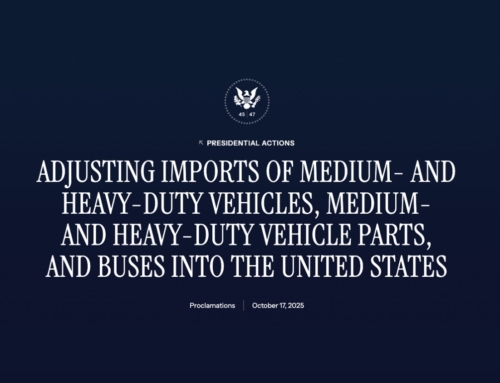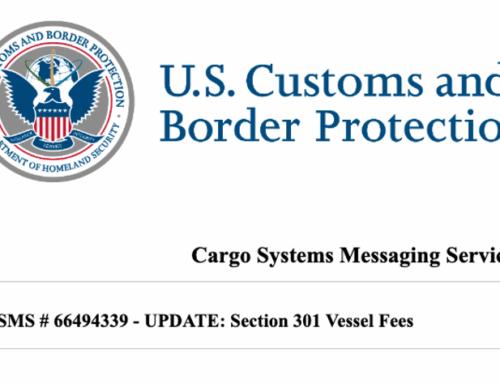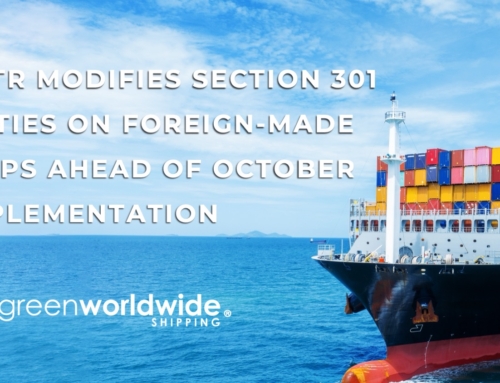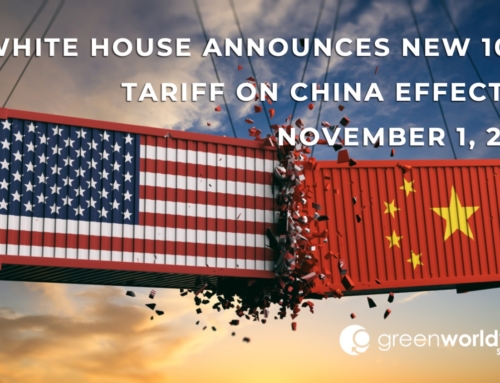On September 25, 2019 the United States and Japan reached an agreement which allowed for tariff reductions on agricultural, industrial and digital goods into both nations. The agreement will go into effect on January 1, 2020 with an additional round of reductions to be announced by April 1, 2020.
Under this new trade deal, approximately 90% of U.S. agricultural goods will be duty free or receive special tariff treatment.
JAPAN ACTION
According to the Office of U.S. Trade Representative, Japan will: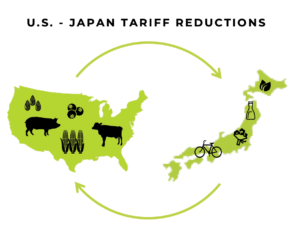
- Reduce tariffs on products, such as:
- fresh and frozen beef and pork, rubber and plastic machinery, machine tools (lathes) and more.
- Reduce the mark-up on imported U.S. wheat and barley.
- Eliminate tariffs on product, such as:
- almonds, walnuts, blueberries, cranberries, sweet corn, grain sorghum, broccoli, and more.
- Provide staged tariff elimination for products, such as:
- cheeses, processed pork, poultry, beef offal, ethanol, wine, frozen potatoes, oranges, fresh cherries, egg products, and tomato paste.
ACCESS THE FULL USTR FACT SHEET: U.S.-Japan Trade Agreement
U.S. ACTION
In return, Japan will receive reduced or eliminated tariffs on 42 lines for agricultural goods from the U.S., as well as:
- Reduced duty on items, such as:
- cut flowers, chewing gum, persimmons, soy sauce and green tea.
- Immediate elimination or reduction of tariffs on fuel cells, bicycles and bicycle parts, glasses and sunglasses, and musical instruments.
- Japanese industries, such as railway parts, 3D printers, and air conditioner parts, who manufacture in the United States will also receive reduced tariffs.
This U.S.-Japan Trade Agreement may help to appease U.S. farmers, who have been concerned after the decision to pull the U.S. out of the Trans-Pacific Partnership (TPP). The TPP would have lowered tariffs among the participating countries, but since the Unites States removed their support, the Comprehensive and Progressive Agreement for Trans-Pacific Partnership (CPTPP) was signed instead between the remaining members: Australia, Brunei, Canada, Chile, Japan, Malaysia, Mexico, New Zealand, Peru, Singapore, and Vietnam.
Under the new trade deal, American farmers would enjoy the same advantages as CPTPP countries selling into the Japanese market.
CONTROVERSIAL CAR TARIFFS
The most contentious part of trade negotiations was threat of a 25% tariff on automobiles.
Japanese Prime Minister Shinzo Abe, however, received assurances that no tariffs would be imposed. Cars make up one-third of all goods exported to the U.S., making it a priority for Japan to ensure no additional tariffs were imposed.
There had been talks since May 2019 of the U.S. levying duties on cars from Japan and the European Union. These tariffs would have been similar to Section 232 tariffs placed on steel and aluminum imports last year.
HIGH-STANDARD DIGITAL TRADE AGREEMENT
Lastly, a separate deal between the U.S. and Japan will ensure a high-standard and comprehensive set of provisions addressing priority areas of digital trade, such as:
- Prohibitions on imposing Customs duties on digital products transmitted electronically such as videos, music, e-books, software, and games.
- Ensuring non-discriminatory treatment of digital products, including coverage of tax measures.
- Ensuring barrier-free cross-border data transfers in all sectors.
- Prohibiting data localization requirements, including for financial service suppliers.
- Prohibiting arbitrary access to computer source code and algorithms.
- Ensuring firms’ flexibility to use innovative encryption technology in their products.
As Green continues to monitor the situation, stay up-to-date on freight news by following us on Facebook, Twitter, and LinkedIn. For continuous updates, make sure to check out our website at greenworldwide.com.


